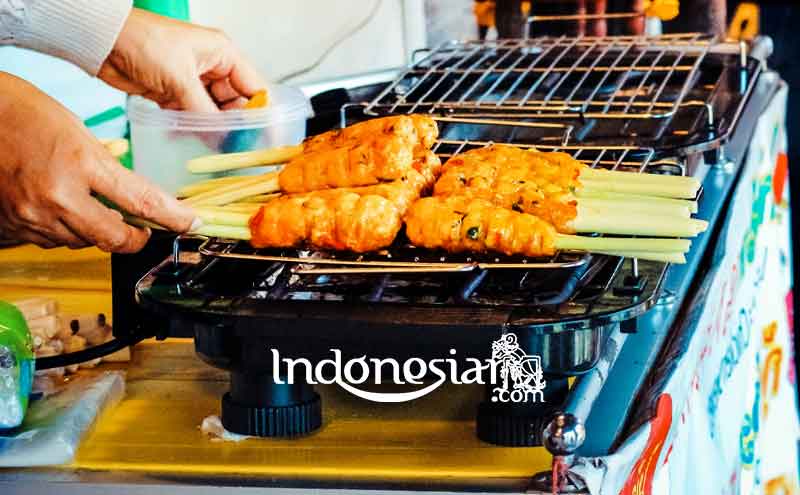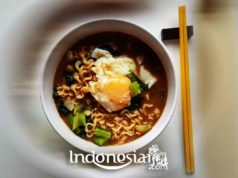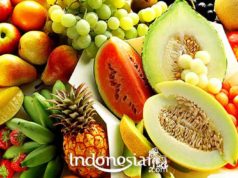Indonesia has some delicious culinary delights. One of those delicious Culinaryis Oyek. Oyek is a traditional Indonesian food originating from the Javanese tribe which is made from cassava. Oyek is usually served on banana leaf pincuk with a sprinkling of grated coconut which has been processed with spices or sometimes just enough salt is added.
Cassava tubers harvested at the age of 12 months are the most appropriate raw material because of their soft texture and not fibrous. How to make it is not difficult. The freshly pulled cassava, then peeled, cleaned, and soaked in water for two days.
After soaking, pound the cassava until it is smooth, then dried in the sun to dry. Before drying it in the sun, the collision of the cassava is formed into small pieces similar to rice grains. If you look at it at a glance, the skin on the skin of cassava is not as bright as the grains of rice. Tends to be paler and slightly brown. In order for it to be consumed, the shelled cassava must be washed so that the cassava fibers are not cooked. Then steamed for about 10 minutes. The taste is very distinctive.
In traditional culinary literacy, it is stated that the areas of Kebumen, Cilacap and Banyumas in Central Java are the origin of the development of ojek. There are also those who call ojek like tiwul. It is not known exactly when ojek began to be used as food. It’s just that, ojek began to often be used as a staple substitute for rice rice during the struggle for Indonesian independence.
At that time people had difficulty getting rice as their daily staple food because the price was no longer affordable and scarce. Cassava was then looked at as a staple food substitute for rice, one of which was made into ojek rice. The choice of cassava to replace rice is quite reasonable because this plant is easy to find, especially since almost every family at that time planted cassava around their yard or garden.
Oyek also became a silent witness to General Sudirman’s struggle in and out of the forest in carrying out guerrilla war tactics against Dutch military aggression in the 1948-1949 era. As narrated by Abu Arifin, Adjutant II General Soedirman, in the book Panglima Besar TNI Jenderal Soedirman: The Leader of the Last Raiders of Colonialism in Indonesia; The story of a guard, while in the area of Kediri, East Java, December 1948, the great general who founded the Indonesian National Army and his troops were pushed into the rattan forest in the area.
Arifin, who was then a captain, said that the troops were exhausted and hungry because they were surrounded by Dutch troops around the forest. In fact, the logistics of the troops were no longer supported to survive in the forest.
Even though they were in a state of extreme hunger, the troops still held on to take the fight. Until finally one night, Adjutant I Jenderal Soedirman, namely Captain Soepardjo Rustam, was ordered to break through the Dutch army barricade to the nearest village in the rattan forest area.
Abu Arifin, who is now almost a century old and lives in Dawuhan Village, Padamara District, Purbalingga District, Central Java, said that at that time Captain Pardjo – as Soepardjo Roestam’s nickname – left with a sarong and used clothes to exchange food. He had to struggle to break through the barricades of Dutch troops to get to the nearest village.
That mission was able to be carried out well by him. At first, Arifin and the troops thought that the food they brought was rice, but later Soepardjo explained that the people living around the forest only owned ojek. Armed with rice made from ojek, General Soedirman and his troops were able to survive for some time in the rattan forest.
Arifin said that oyek rice was an energy booster and made all troops not feel hungry. Arifin’s statement is quite reasonable because ojects are complex carbohydrates containing molecules such as oligosaccharides and polysaccharides. The content is more than rice with simple carbohydrates such as monosaccharides.
As a result, carbohydrates in ojek will be absorbed more slowly by the body so that the energy produced can last continuously. Thus the body does not get hungry easily and avoid obesity.
Currently, oyek is a well-known traditional food in Indonesia. On online trading sites, there are more and more sellers of oyek rice or the raw material for making this unique food. They label it as cassava rice or keep the name of the ojek as the product being sold.
Ojek materials are sold in various packages, ranging from 500 grams to 2 kilograms. The price also varies, starting from IDR 10,000 to IDR 30,000 for each size, much more than the price of rice.
In the hands of Rosidi, a resident of Kebumen, oyek is not only rice. He turns ojek into a variety of appetizing culinary delights. For example, fried oyek with a sprinkling of tempting petai chili sauce or oyek liwet spices rice. There is also a layer cake and red and white pudding made from oyek ingredients. Rosidi also created breakthroughs with the shrimp sushi ojek and the mud pudding ojek.
Are you interested in trying out delicious culinary delights from Indonesia? Come on, visit the Indonesiar.com website and get other interesting information to add ANFA references about Indonesian culinary.
































